
The NVIDIA GeForce RTX 4080 may not be the most sought-after card within the GPU maker’s current RTX 40 Series lineup right now, but that doesn’t detract from the fact that the card is, for all intents and purposes, as much a powerhouse as the RTX 4090.
In this review, we’ll be looking at two GeForce RTX 4080 cards that I received within a couple of weeks from each other: one from ASUS’ top-range ROG Strix lineup, and the other from Gigabyte’s cask strength-level AORUS Master series.
Specifications
Design
Despite being identical in respect to its AD103 GPU, the same 16GB GDDR6X graphics memory, and the same 4nm Ada Lovelace architecture, the differences between these two GeForce RTX 4080 lie squarely in what their manufacturers have fitted them with.
ASUS ROG STRIX OC Edition
I’ll come right out the front and say it: ASUS’ current iteration of the ROG Strix cooler design is literally the most symmetrical and square design I have ever seen on a graphics card. It’s still a very pretty card to look at but seriously, the corners on this card are flushed at the front and the sides, but shows a bit more skin on the backplate.
What I mean by that last point is that the backplate of this high-end ASUS RTX 4080 actually shows more skin and texture in its logo design. The exposed back of the GPU notwithstanding, there ROG logo at the other end stands out because of the way its parent company has chosen to topographise it and therefore make it visible at almost every other angle.
That being said, the ASUS ROG Strix RTX 4080 is an absolute fatty and dwarfs even the Founders Edition of the GPU. Installed, it takes up 3.5-slots of the motherboard, which is par for the course of most thick heatsink-equipped graphics cards. For that matter, you get the usual fare of advanced axial, triple zero RPM fans that use an alternative spinning method to cool the cards.
Of course, as with all modern graphics cards, ASUS’s ROG Strix RTX 4080 does have RGB; the LEDs are primarily positioned at the rim of the card’s edge – you can’t miss it, the LED strips are literally wrapped around it and are even encased around in a thin layered of acryllic glass. For another matter, the logo on the spine also lights up but can also be turned off when needed. Still, on the subject of the LED, it is not the most vulgar application of the aesthetic, even if you choose not to customise it to the mode you want.
One nifty little inclusion that ASUS has also so graciously installed two 4-pin PWM fan headers at the edge of the card, meaning that you don’t have to think so hard over how you plan on connecting those extra fans you bought for the casing, directly to the headers on the motherboard. On another note, if you pay close enough attention, you will also notice that the 12VHPWR or 16-pin PCIe Gen5 power port is actually sunken deeper into the GPU’s body, a manufacturing design that I presume is done on purpose, in order to accommodate the provided triple 8-pin to 16-pin adapter a little more…aggressively.
Ports-wise, the ASUS ROG Strix GeForce RTX 4080 OC Edition comes with three DisplayPort 1.4a ports and not one, but two HDMI 2.1a ports.
Gigabyte AORUS Master
Equally as gargantuan in its physique is the AORUS Master RTX 4080. Despite being almost the same size as the ASUS ROG Strix RTX 4080, it’s the virtually solid block design that actually makes the card feel and look bigger than it actually is.
Compared to ASUS’ high-end RTX 4080 offering, Gigabyte’s AORUS Master iteration of the card actually bares a lot less in terms of its cooler shroud design. It still looks square-ish, and it also adopts the extended, or rather, protruding heatsink, which is double the actual length of the PCB. For that matter, the GPU’s parent company has chosen not to partially expose the back of the GPU die and instead keep it covered with the backplate.
The AORUS Master RTX 4080 also has more bling to speak than its rival; its triple-fan configuration actually has RGB LEDs installed that light up with all the colours of the rainbows the minute they spin up. Honestly, the lightshow reminds me of those stores you find in our local night markets, that use these accessories in an effort to attract passers-by. Another bling factor of the AORUS Master RTX 4080 is the mini LED display that is installed into the spine of the card. As you would expect, the LED panel serves a variety of functions that range from colourful animations to displaying a brief summary of the GPU’s statistics.
Ports-wise, the AORUS Master RTX 4080 keeps to the NVIDIA template, providing just one HDMI 2.1a port for a maximum output of 8K when needed, and three DisplayPort 1.4a ports.
Testbench
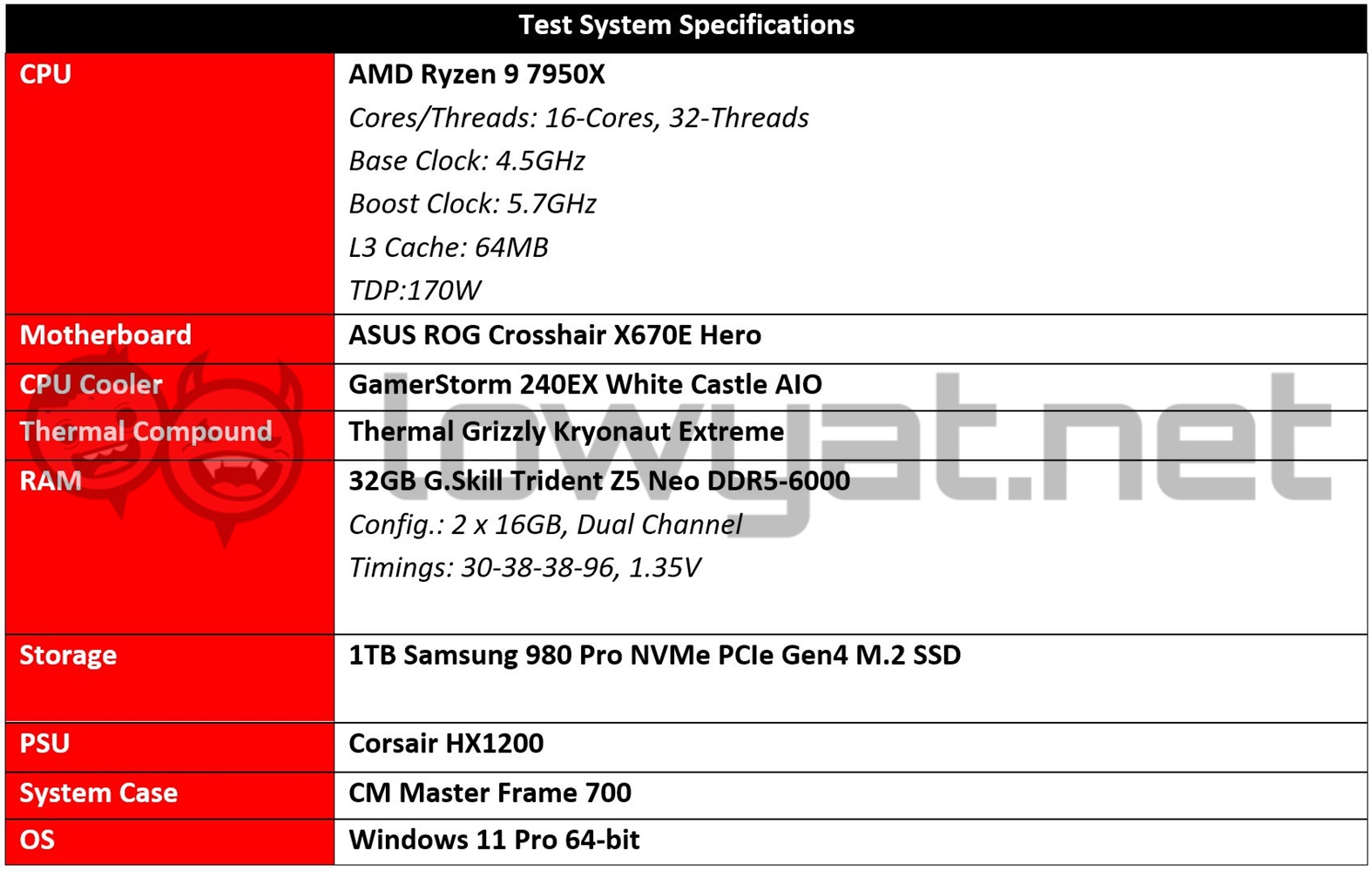 As usual, the testbench I am using to test both the ASUS ROG Strix and Gigabyte AORUS Master RTX 4080 cards is an AMD-based system. Specifically, I’m using the same Ryzen 9 7950X and X670E motherboard, AMD EXPO DDR5 RAM, and an ASUS Ryujin II 360 AIO Cooler.
As usual, the testbench I am using to test both the ASUS ROG Strix and Gigabyte AORUS Master RTX 4080 cards is an AMD-based system. Specifically, I’m using the same Ryzen 9 7950X and X670E motherboard, AMD EXPO DDR5 RAM, and an ASUS Ryujin II 360 AIO Cooler.
For comparison’s sake, I’ll be benching both custom-cooled RTX 4080 cards against two others: the Founders Edition (FE) variant of the card, and AMD’s own Radeon RX 7900 XTX, which I reviewed back at the end of last year. It seems logical, given that the red chipmaker had openly proclaimed that its top-tier card would give NVIDIA’s second-most powerful consumer GPU a run for its money.
Benchmarks
In my review, the match between ASUS’ and Gigabyte’s RTX 4080 is kind of hit-or-miss and that’s for both synthetic and real-world benchmarks. In 3DMark, the DirectX 11-based tests, such as Fire Strike, clearly show the ASUS ROG Strix model gradually overtaking Gigabyte’s AORUS Master. And even with the former maintaining a small lead over the latter, one could also argue that those gains are, at best, negligible.
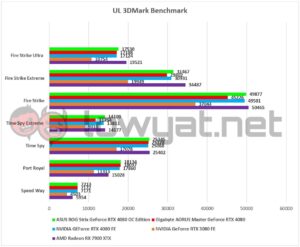
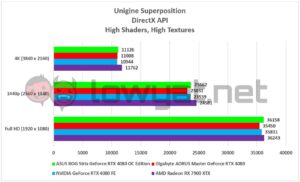
Gaming itself is where both the ASUS ROG Strix and AORUS Master RTX 4080 models really duke it out, with one trying to outshine the other (par for the course). That being said, there are some titles where one card can actually pull well ahead of the other, and vice versa.
Games such as Doom Eternal is one such example, where the ASUS ROG Strix RTX 4080 actually manages to maintain a healthy lead in the frame count. For that matter, the card does have a lead over the AORUS Master SKU in almost all title but again, some of those leads are minuscule to the point that one or two frames really isn’t worth arguing about. Honestly, the only time I’ve ever seen Gigabyte’s card actually pull ahead is in Cyberpunk 2077 and at Full HD resolution.
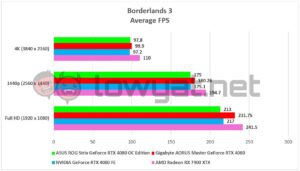
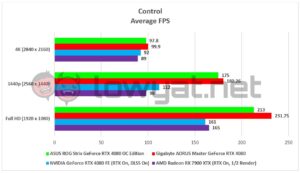
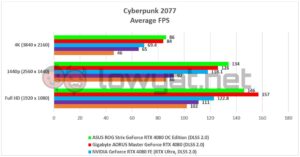
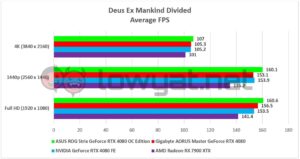
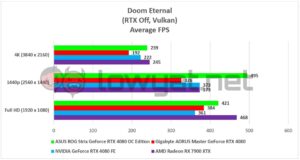
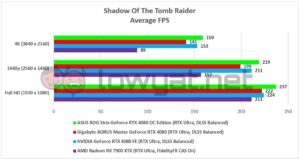
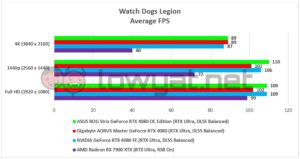
One additional factor that I don’t usually include in review is fan noise but considering that this is more or less a GPU-to-GPU comparison, I am able to report that both RTX 4080 cards don’t sound like fighter jets warming up their afterburners – to be fair, almost all high-end cards don’t actually sound like that anymore – but if I have to scrutinise, I would have to label the ROG Strix the screaming sheep in the room next to the AORUS Master, albeit only by a very small margin.
Temperature And Power Consumption
To be honest, there’s little or next to no surprise with the temperatures and power draw of both the ROG Strix and AORUS Master RTX 4080 GPUs here. Idle temperatures for both cards are well within the 30°C average although when running at full speed, Gigabyte’s card seems to run the hottest of the two.
This is despite the AORUS Master RTX 4080 is being flanked by a massive hunk of metal and Gigabyte’s own iteration of the advanced triple-fan configuration.
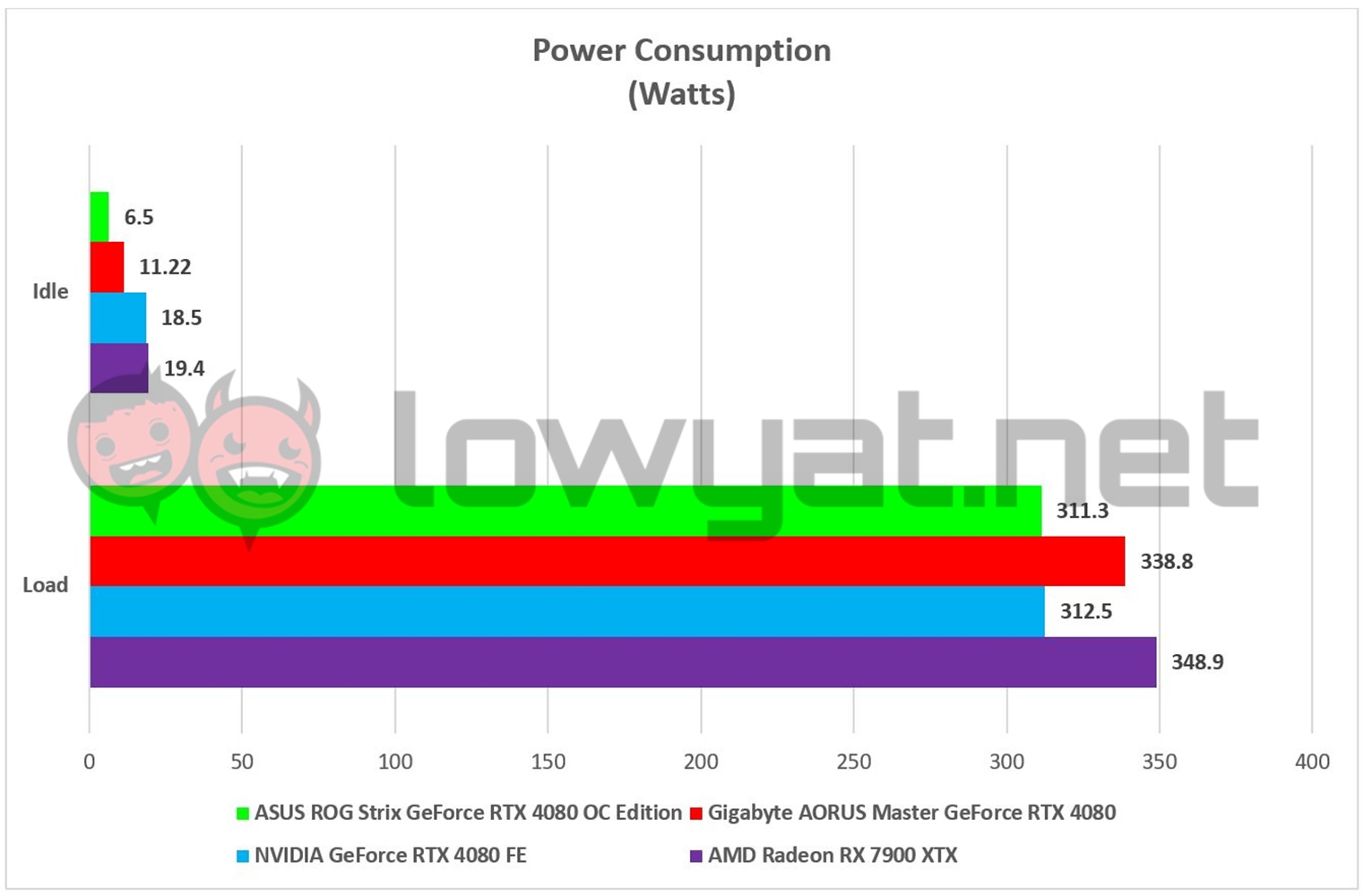 As for the power consumption, it appears to be a similar story between the ROG Strix and AORUS Master RTX 4080 GPUs, with the former pulling slightly less power than the latter. Again, it’s not a huge gap between the two but at a glance, ASUS’s card is on par with the power consumption of NVIDIA’s FE variant. To look at it in another way, its performance-per-watt is clearly much better than its rival.
As for the power consumption, it appears to be a similar story between the ROG Strix and AORUS Master RTX 4080 GPUs, with the former pulling slightly less power than the latter. Again, it’s not a huge gap between the two but at a glance, ASUS’s card is on par with the power consumption of NVIDIA’s FE variant. To look at it in another way, its performance-per-watt is clearly much better than its rival.
Conclusion
As I first said in my original review of the GeForce RTX 4080, it is beyond a shadow of a doubt that this GPU is powerful – my exact words were that it slaps – but was ultimately kneecapped by its parent company by pricing it more closely to the SRP of the more powerful RTX 4090, to the extent that many gamers who wanted an Ada Lovelace card would simply pay that little more for the latter. That was then, this is now. Today, that price gap has grown a lot wider, with both ASUS’ ROG Strix and Gigabyte’s AORUS Master versions of the card actually selling for less than RM7000.
This is then a relatively tough call to make. Ultimately, if I have to make a choice, then I will go with the ASUS ROG Strix RTX 4080 over Gigabyte’s AORUS Master, on the grounds that the GPU has been proven to draw slightly less power. Again, the AORUS Master isn’t bad and is still a looker but at the end of the day, it is still the thicker and heavier GPU of the two. Of course, if you’re not bothered by these factors and you actually pick out the latter because of that mini-LED aesthetic, I would totally understand that too.
Photography by John Law.

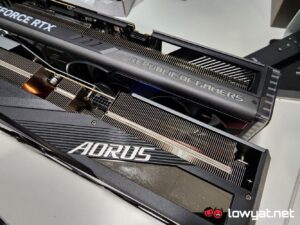
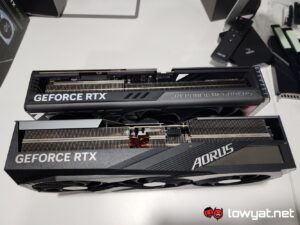
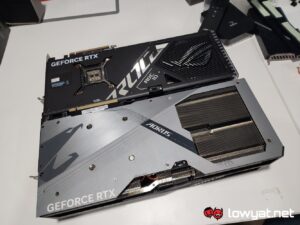
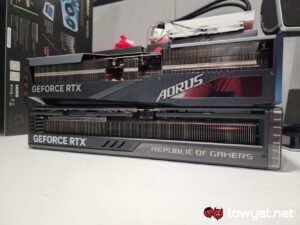


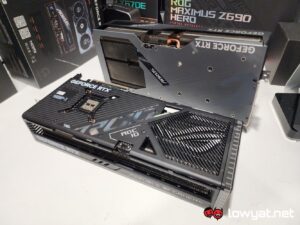
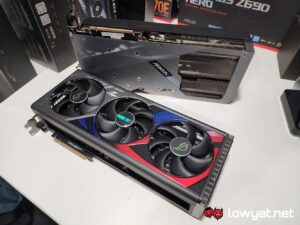
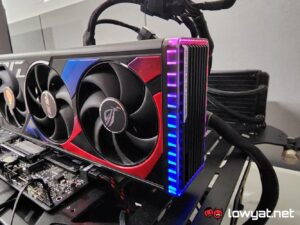
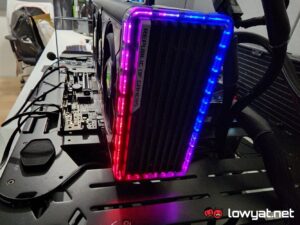
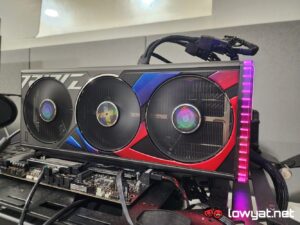
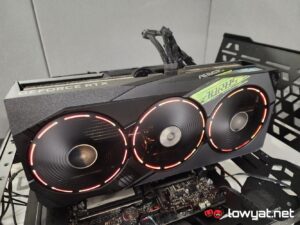
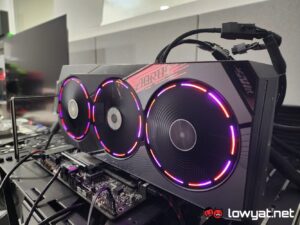
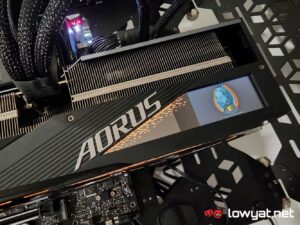
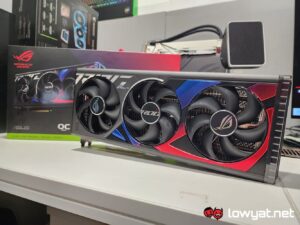
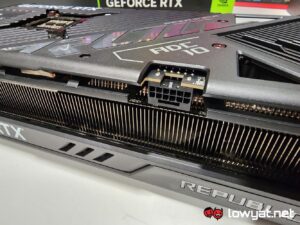
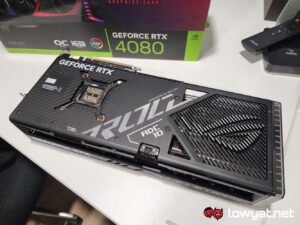
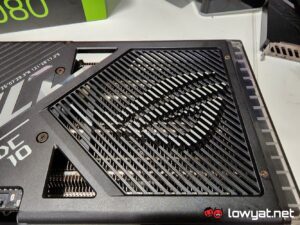
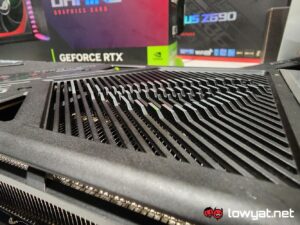
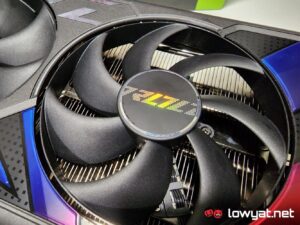

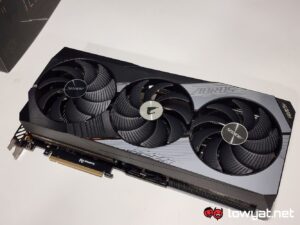
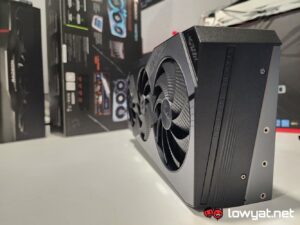
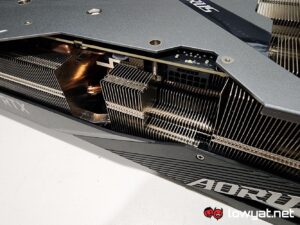
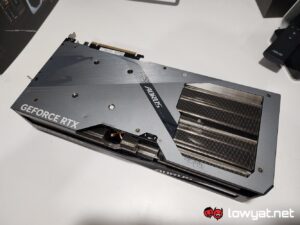
The post NVIDIA GeForce RTX 4080 Showdown: ASUS ROG Strix Gaming OC Vs Gigabyte AORUS Master appeared first on Lowyat.NET.
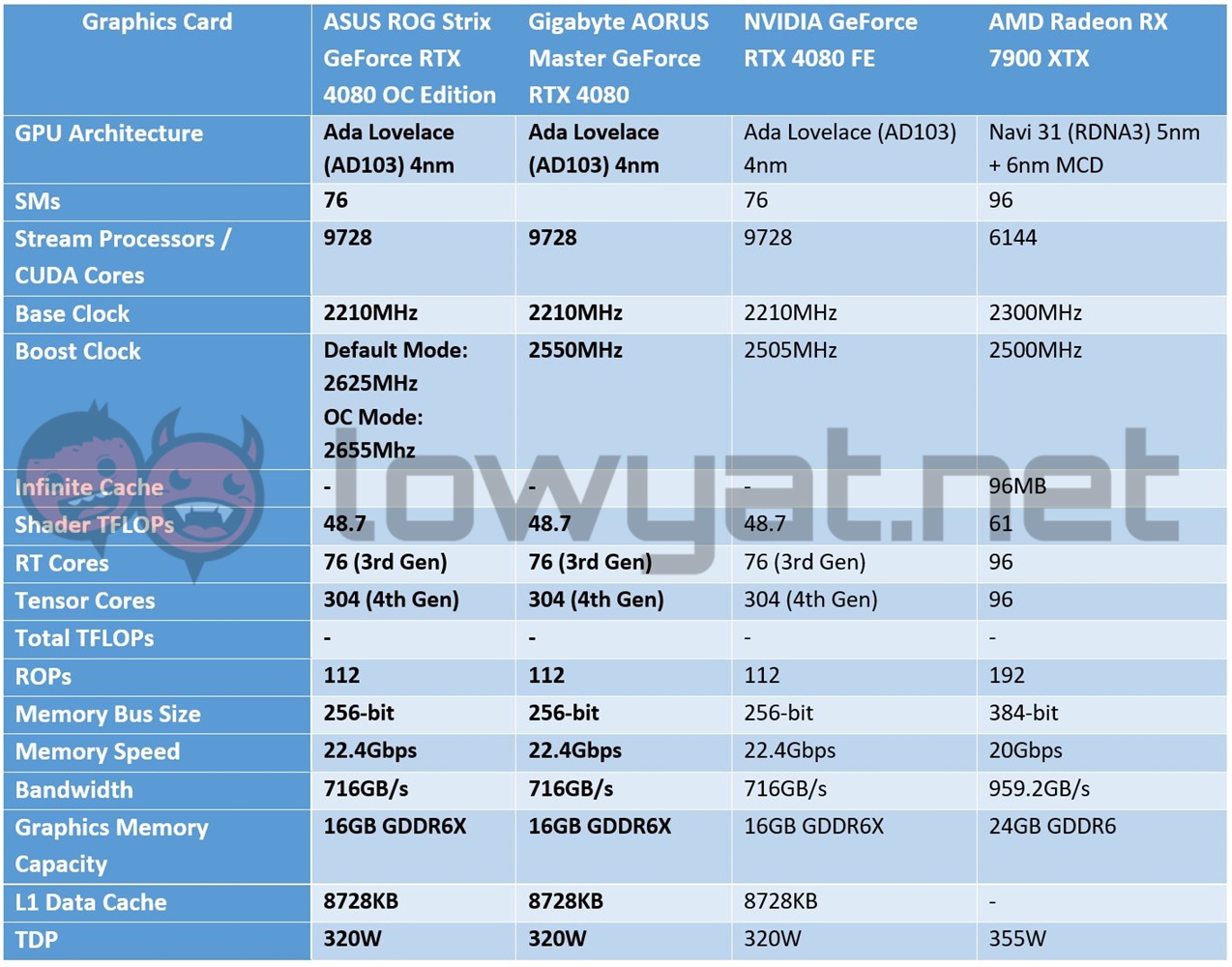
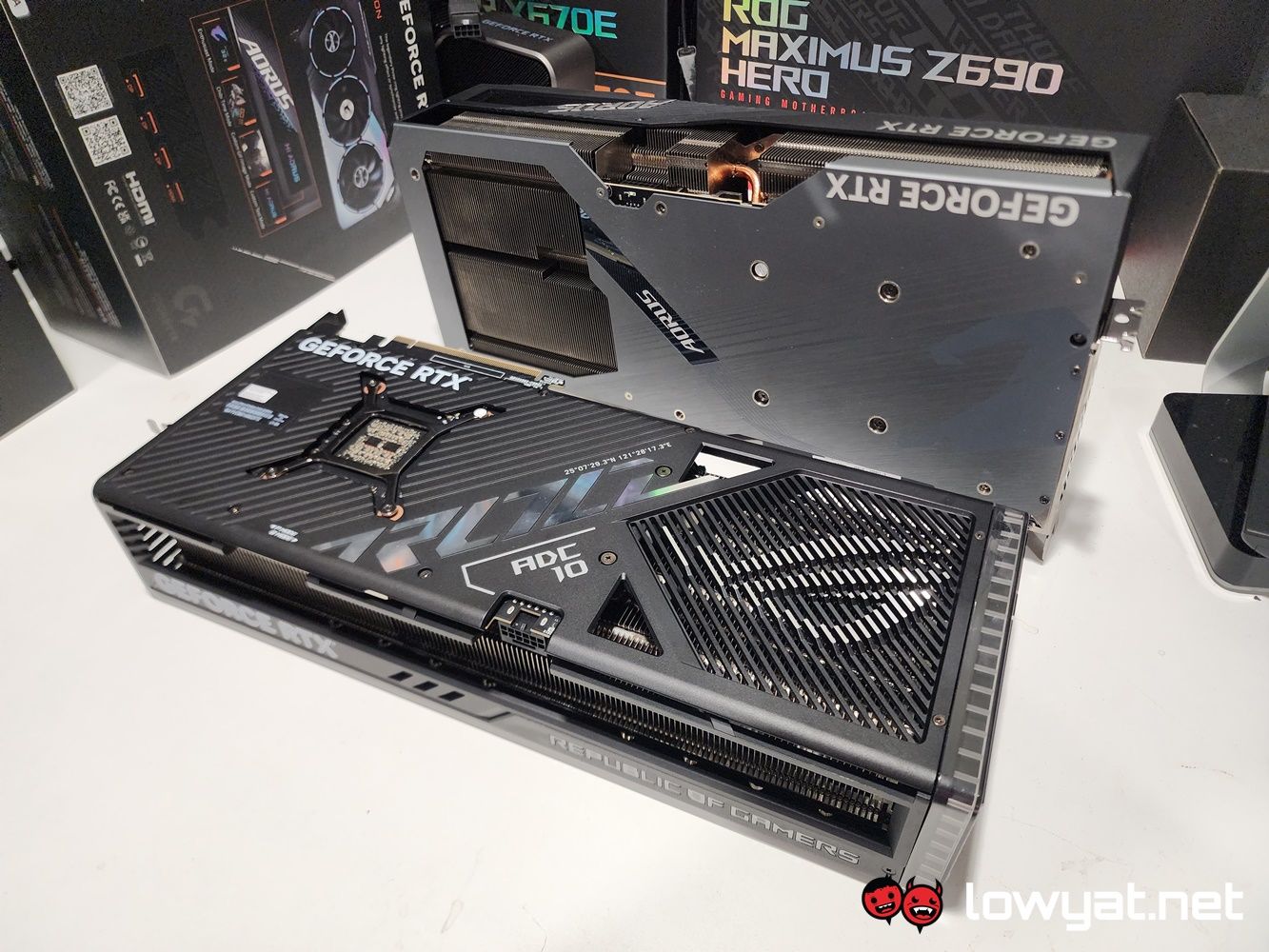
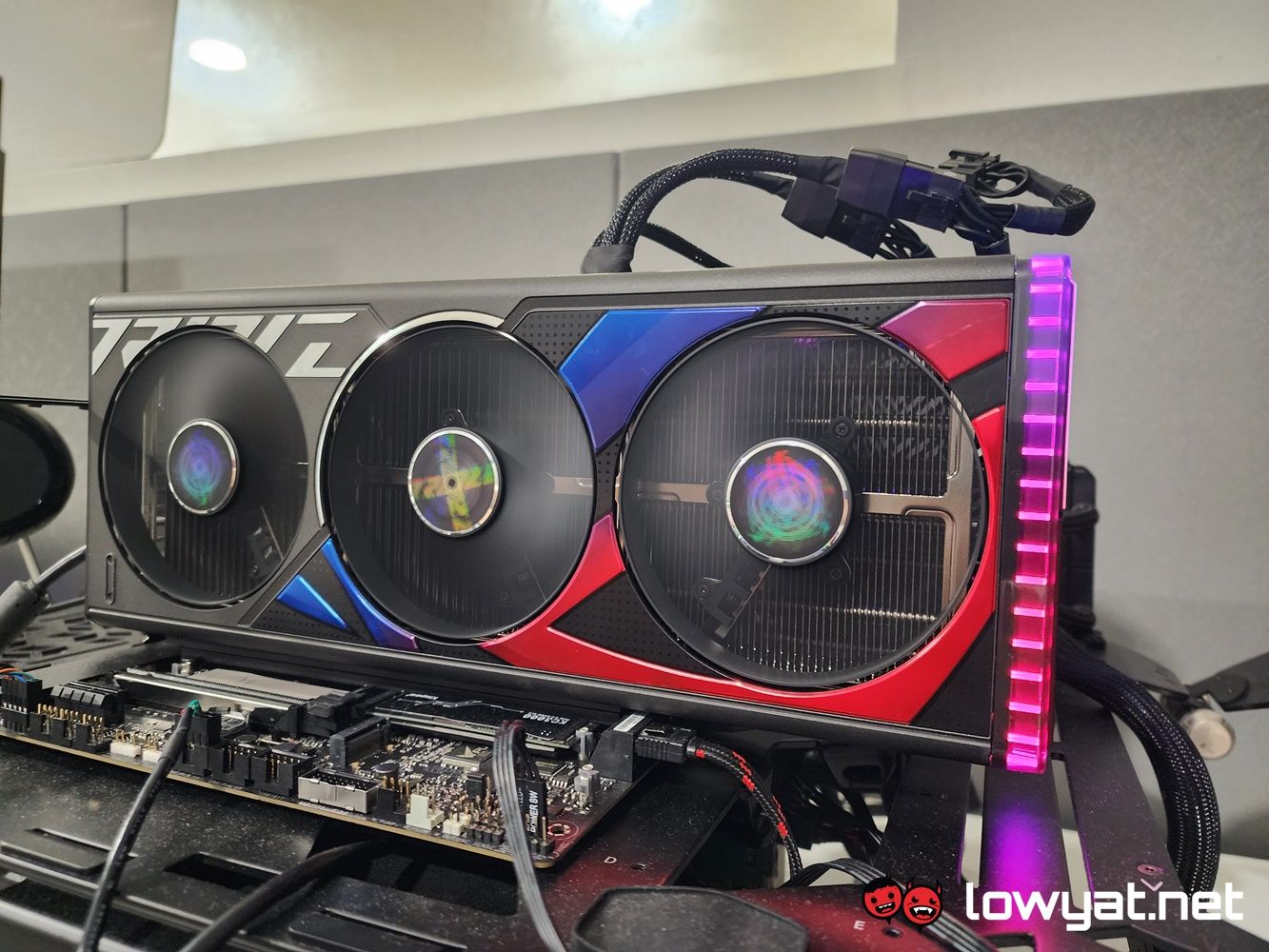
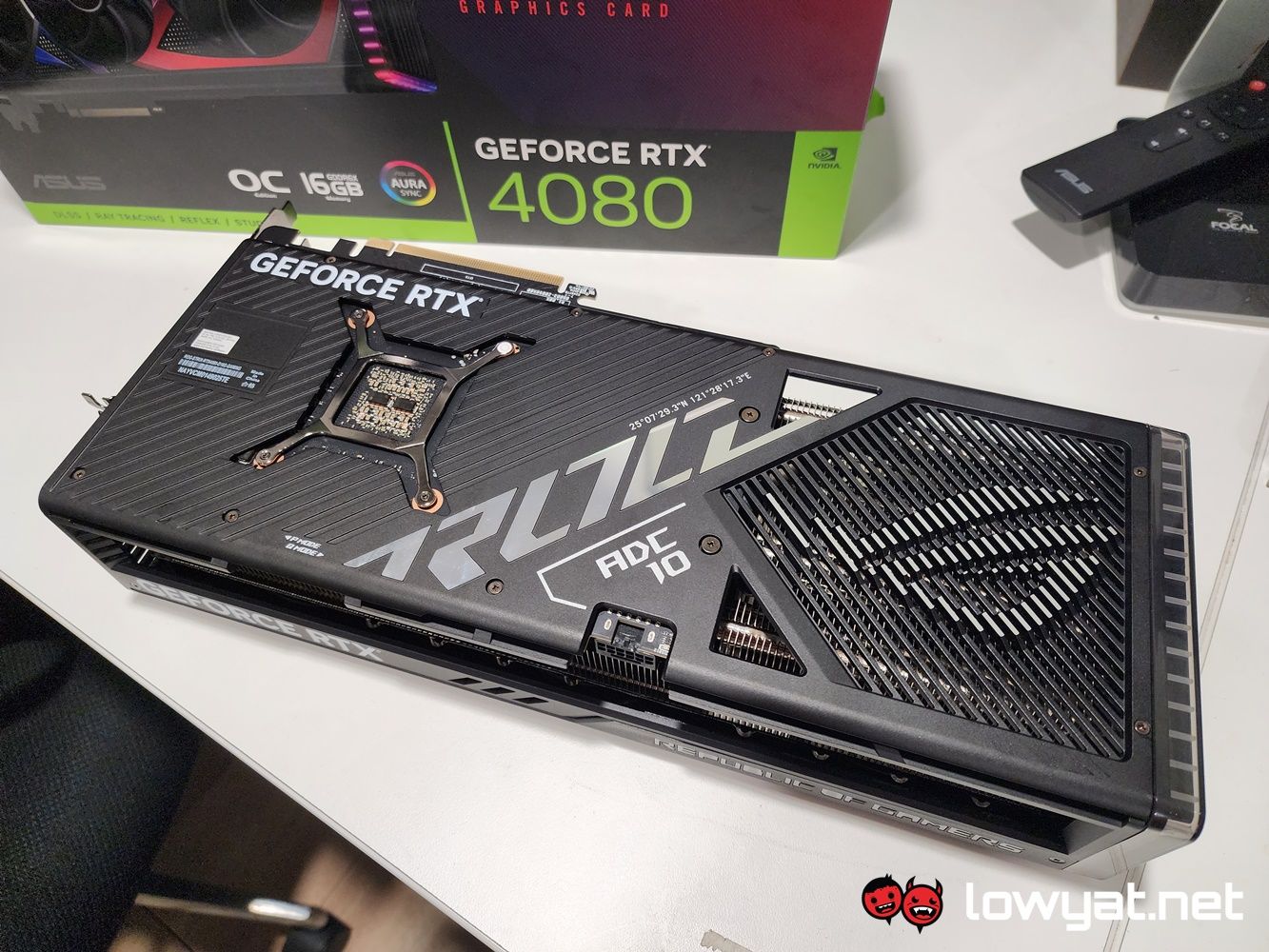
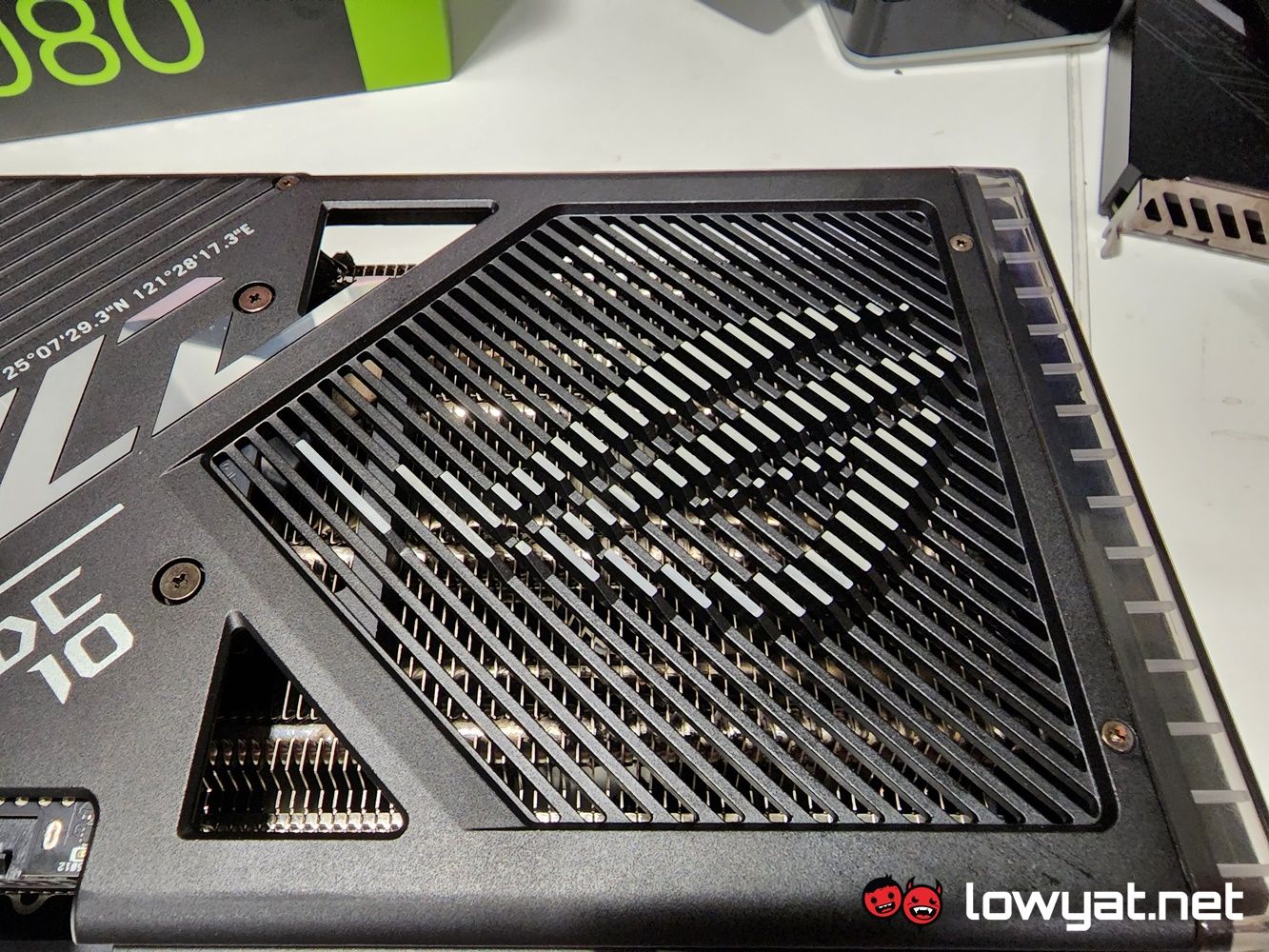
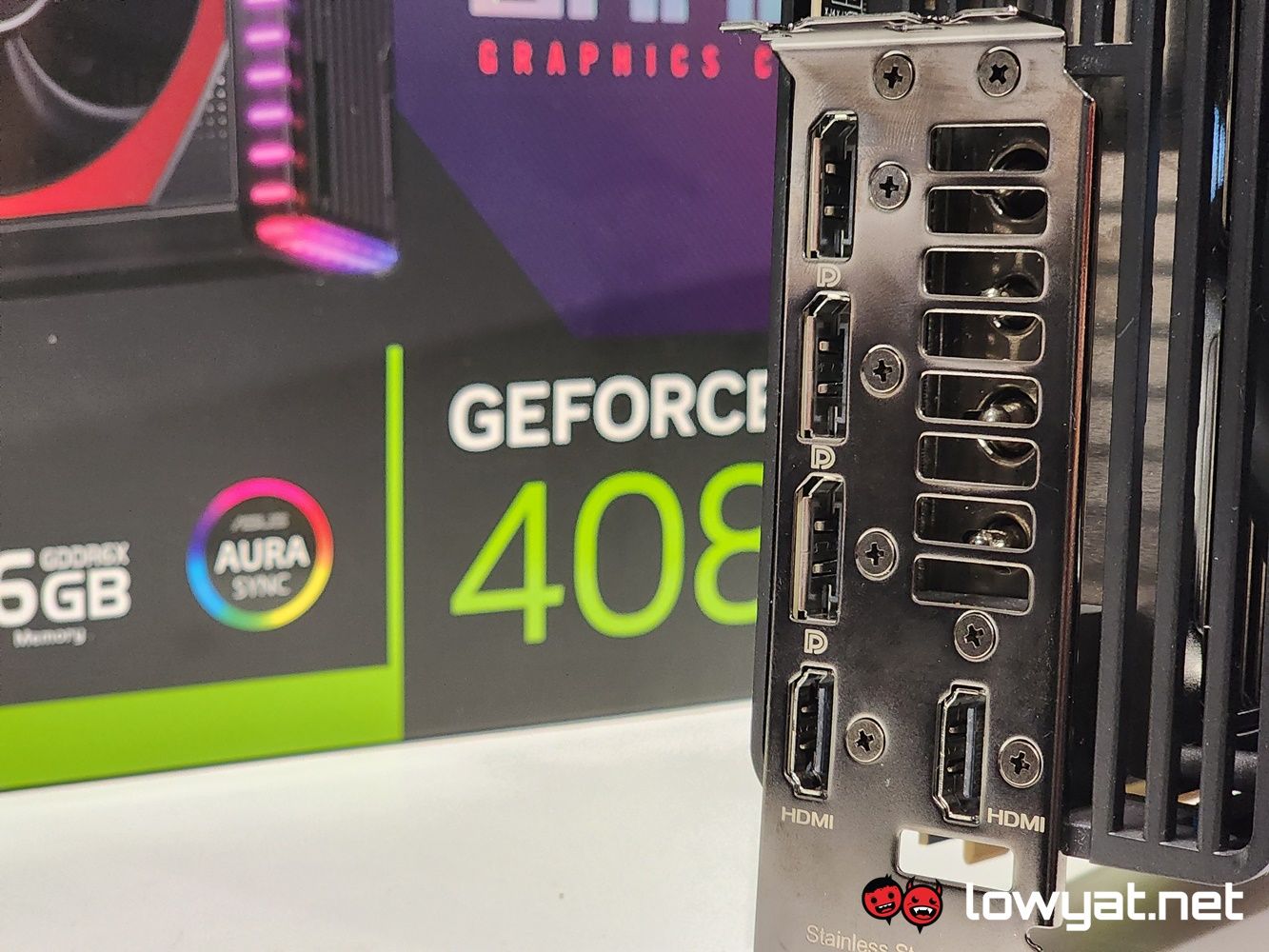

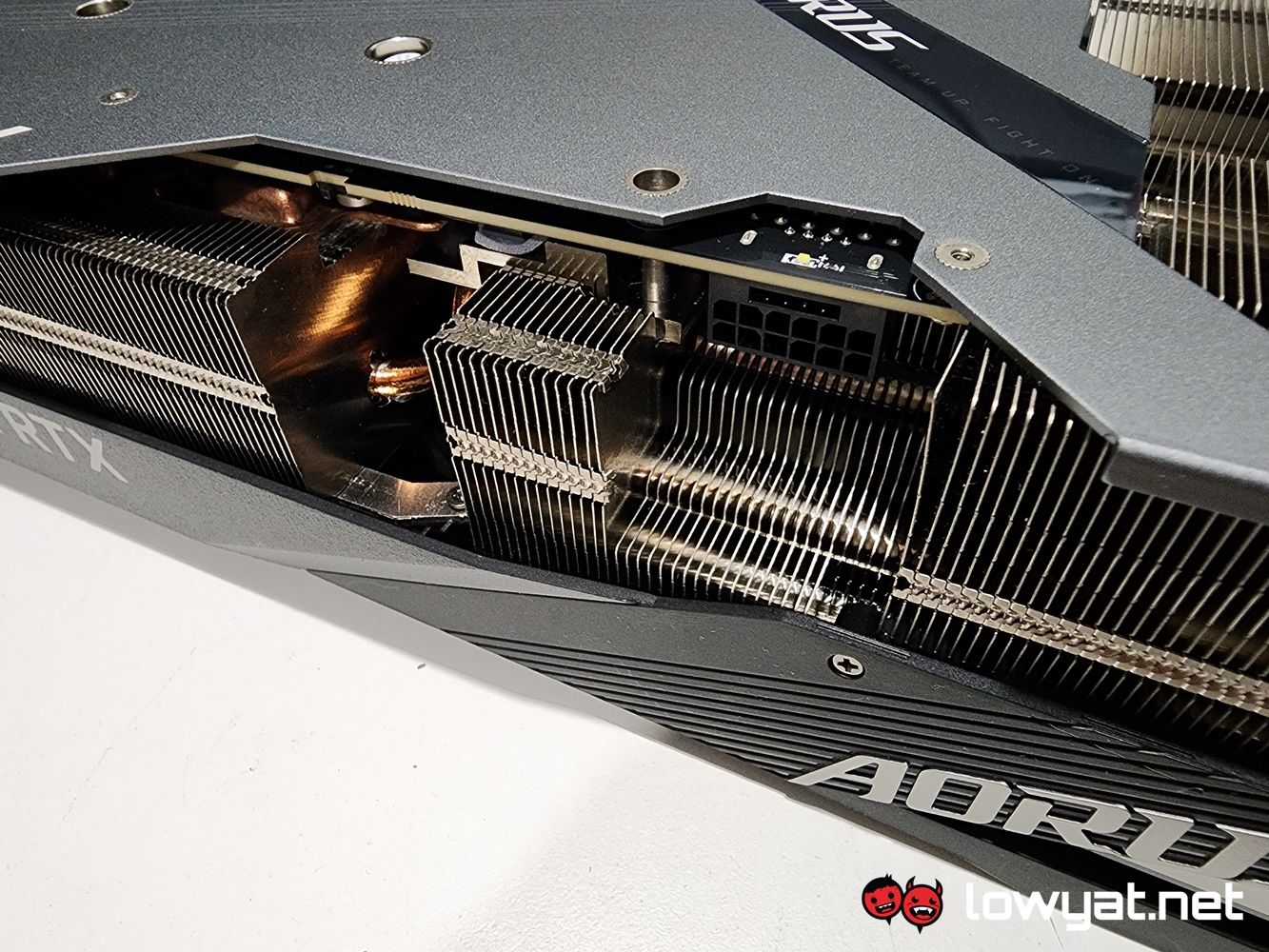
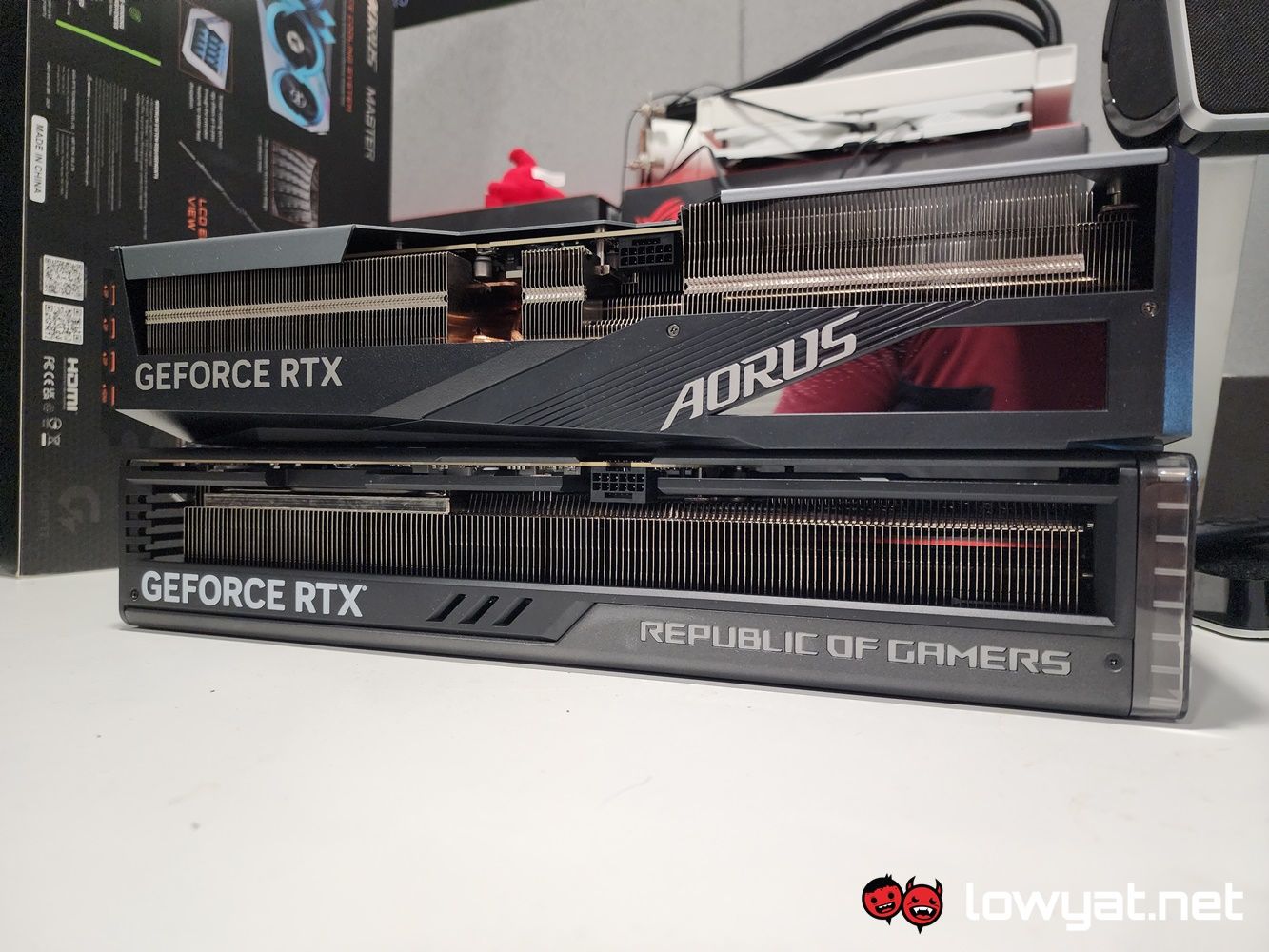
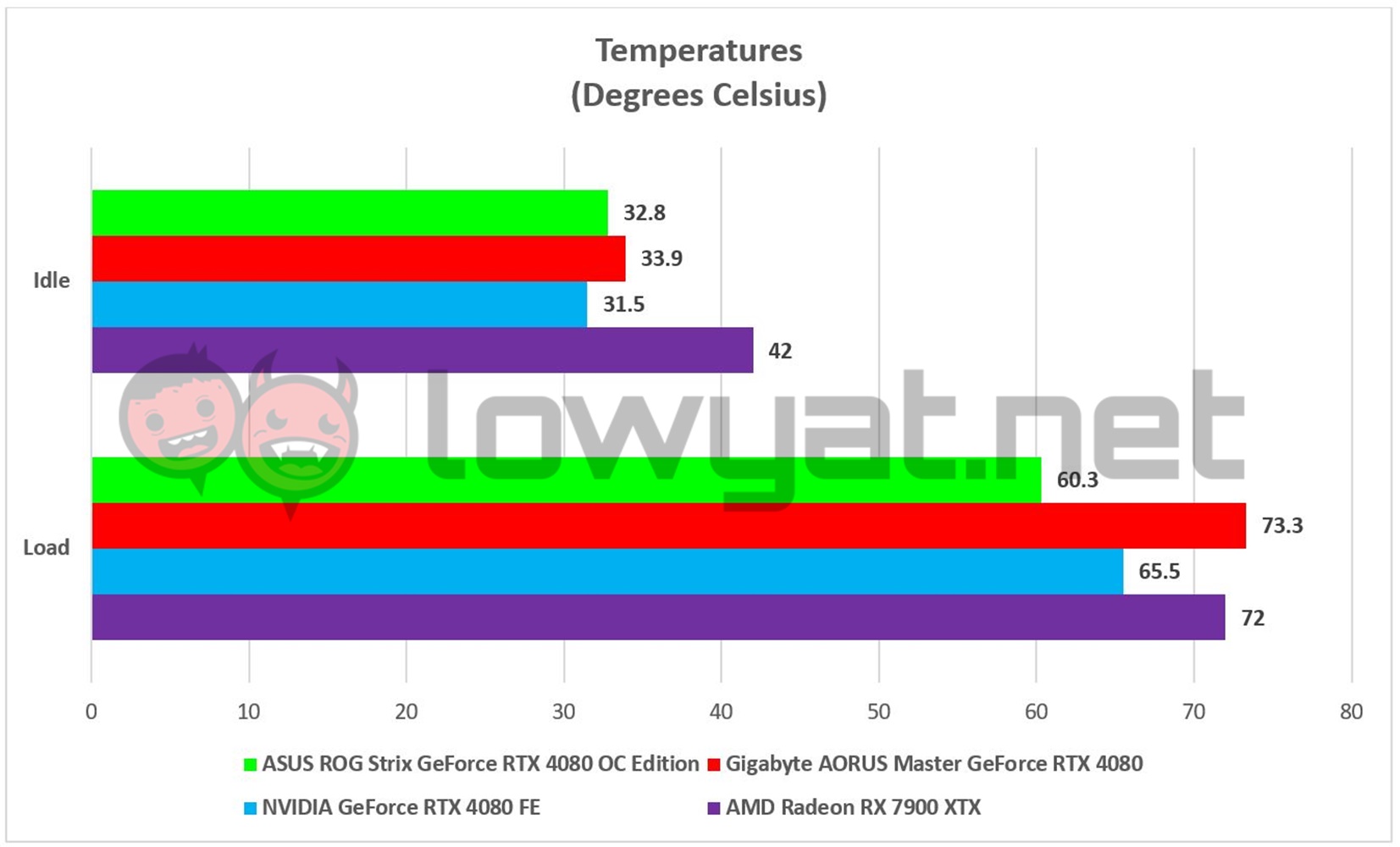
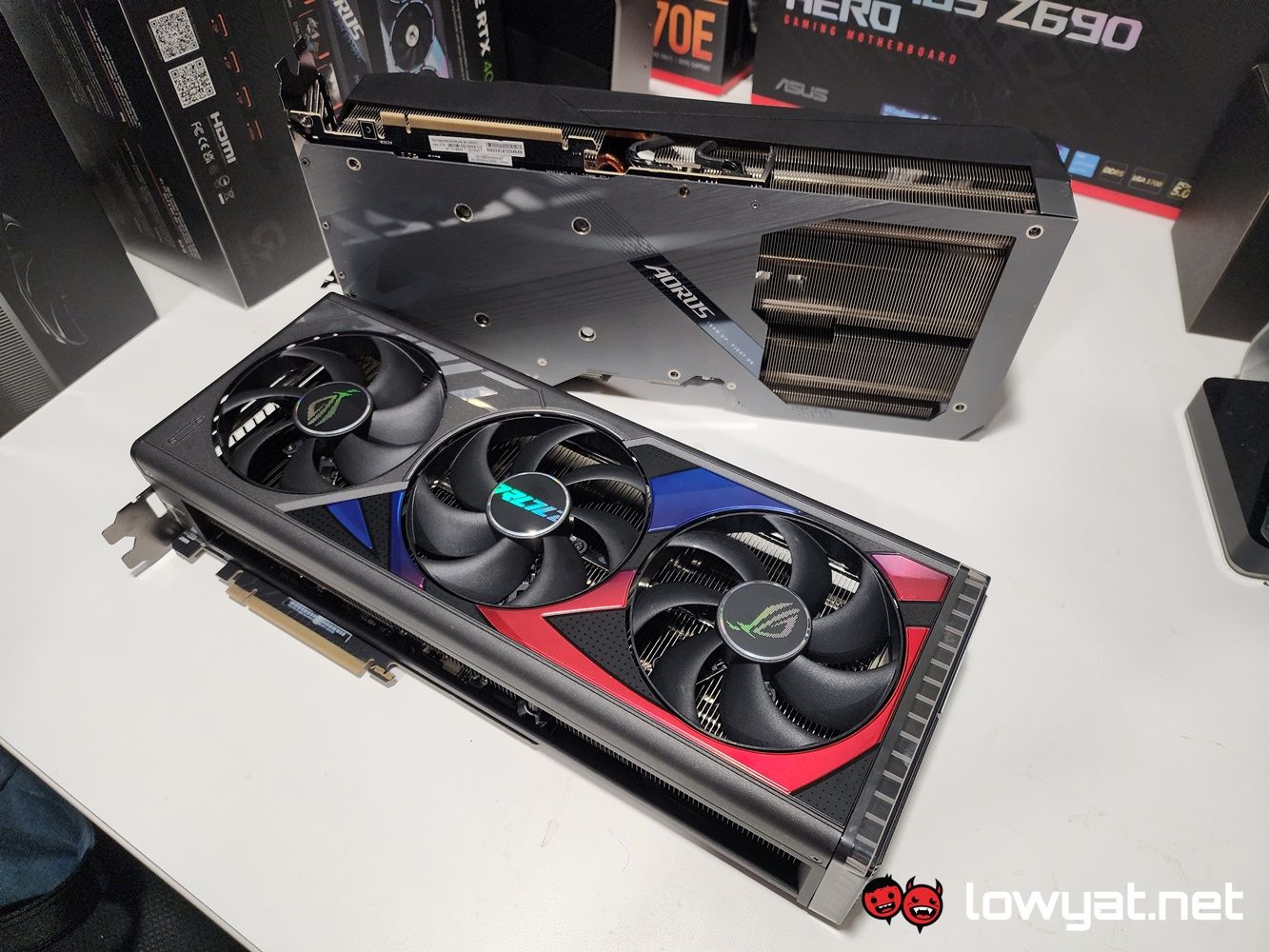
0 Commentaires